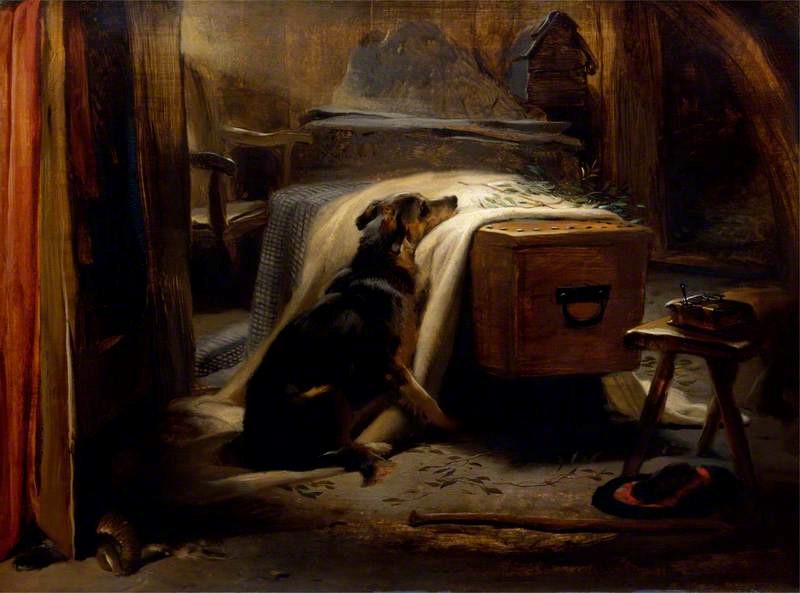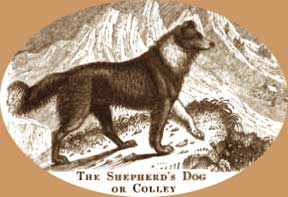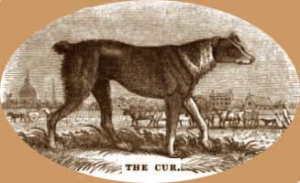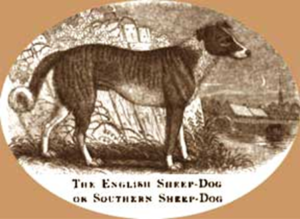Louisa Cornell
The relationship between herding dogs and their masters is one of longest standing and in many ways the closest when it comes to dogs and humans during the Regency. Herding dogs were some of the hardest working dogs of the era, but they spent a great deal of time with their masters. It was not unusual for herding dogs to sleep with their masters, especially when they were out with their herds or flocks. The level of communication between herding dog and master was on a completely different level than that of a pet and master. This sort of relationship would certainly engender a level of mutual respect and affection between dog and master. There were, of course, exceptions. The life of a shepherd, a keeper of sheep and cattle, was a hard one. There were those who trained and used their dogs with tactics of fear and abuse. However, this did not always make for a willing and obedient dog. A master who appealed to a herding dog’s innate desire to please and instinct to herd was far more successful, and part of this sort of relationship had to involve love, loyalty, and affection between man and dog.
The artist Edwin Landseer (1802-1873) understood this relationship very well when he painted his famous work The Old Shepherd’s Chief Mourner.

Old English Sheepdogs
It is generally agreed that this breed, fairly closely to the way we know it, had its origins in the southwestern counties of England in the early 19th century. They were referred to as “drovers’ dogs” as they were used primarily to drive cattle and large breeds of sheep to market. Their tails were docked to show that they were working dogs. Companion dogs were taxed, working dogs were not.
Border Collies
Remember that the appearance of these dogs during the Regency would not match our vision of this breed today. Not to mention, a number of different sorts of dog fell under the label of sheep dog. The dog most like the sheep dogs of the Regency is the border collie.
Perhaps the earliest training manual for sheepdogs was written by William Ellis (ca. 1690-1759). Ellis was a farmer from Little Gaddesden in Hertfordshire, about 30 miles northwest of London. In 1732 he wrote The Practical Farmer or The Hertfordshire Husbandman. His book enjoyed popularity immediately upon publication. In this book, Ellis writes a description of the ideal sheepdog.
A Shepherd generally keeps a rough-coated Dog, partly, I suppose, for their being, as I said, better enabled by their fluffy warm Coat, to withstand the Violence of Frosts and cold Winds, or to become the more frightful to their Sheep, and for his closer Attendance on his Master, as he is somewhat slower than a smooth-coated one, therefore not so subject to hare and run the Sheep too fast; and is commonly the most sensible one of all others…One Thomas…has a has a brindle-colour’d, very shaggy-hair’d Dog, of the biggest Sort, so much at Command, as to lie down by a Fold all Night to guard the Sheep till next Morning; and for making haste on an emergent Occasion, when Sheep are pent in a narrow Place, will run over their Backs; and in several other Respects, makes himself an excellent Shepherd’s Dog…
Sheepdogs generally began their training at the age of 6 months. They were taught a number of basic and important commands, the first of which was “lie down.” This was an important command when dealing with sheep as a dog on its feet tended to intimidate and sometimes frighten sheep. Every shepherd had his own system of commands and signals that could be a series of whistles, short word commands or even hand signals.
Shepherd’s dogs were divided into three categories or types during this era: the Shepherd’s Dog or Colley; the English Sheep-Dog or Southern Sheep-Dog; and the Cur or Drover’s Dog, As you can see the “breed” names were a little ambiguous. These dogs tended to be bred by shepherds and sheep farmers. Their bloodlines were managed and tracked in hand-written records by each farmer. Dogs from one farmer might be loaned out to another for stud purposes. These dogs were bred for very distinct qualities.
Keen sight.
A keen sense of smell.
Courage.
Intelligence.
Loyalty.
Vigilance.
Athletically active.
Constant watchfulness.
Agility.
Hardiness in all kinds of weather.
Devotion to duty.


